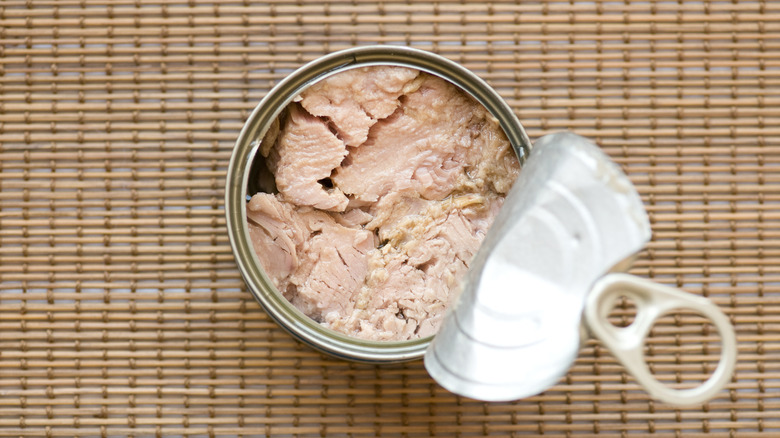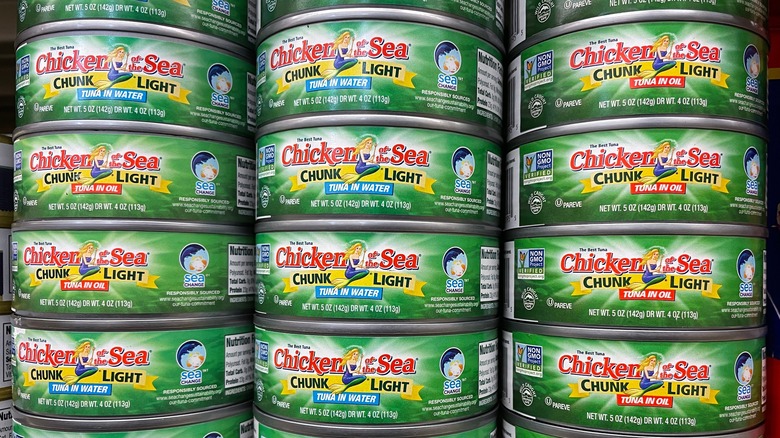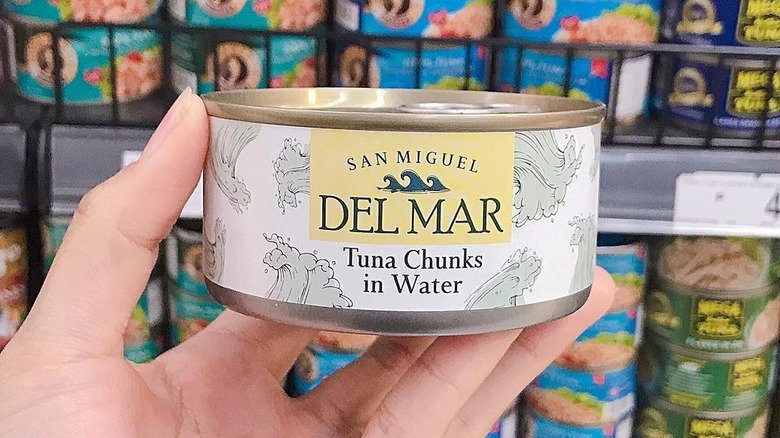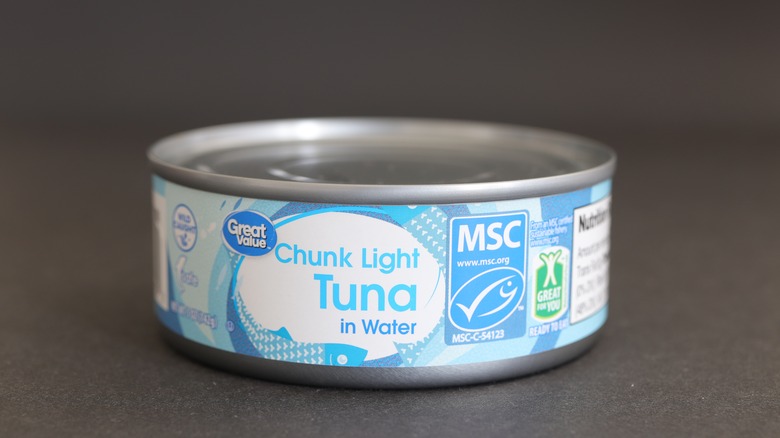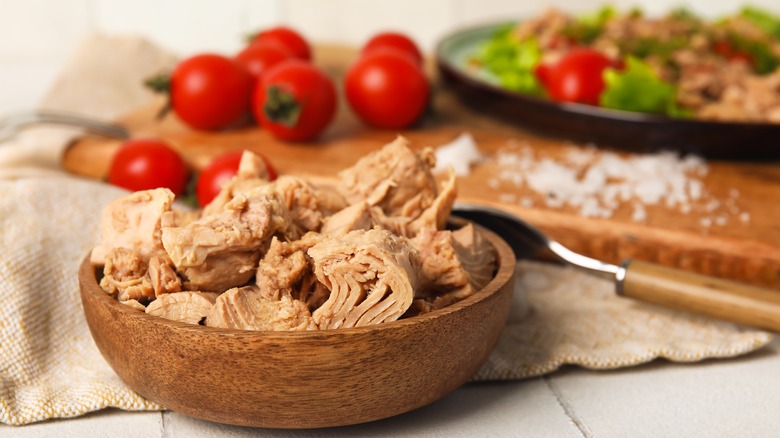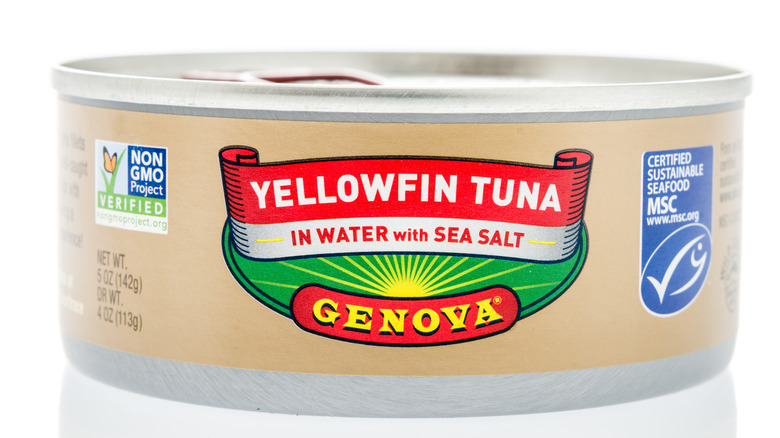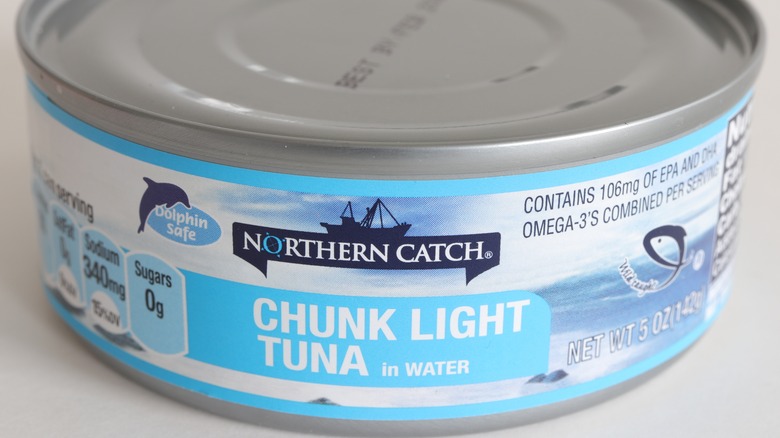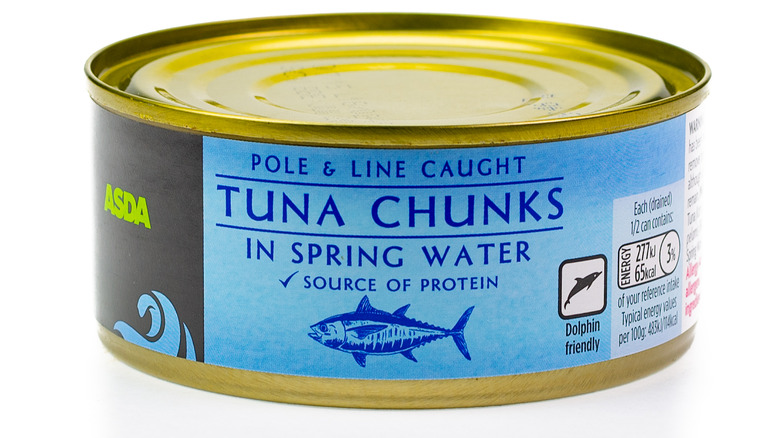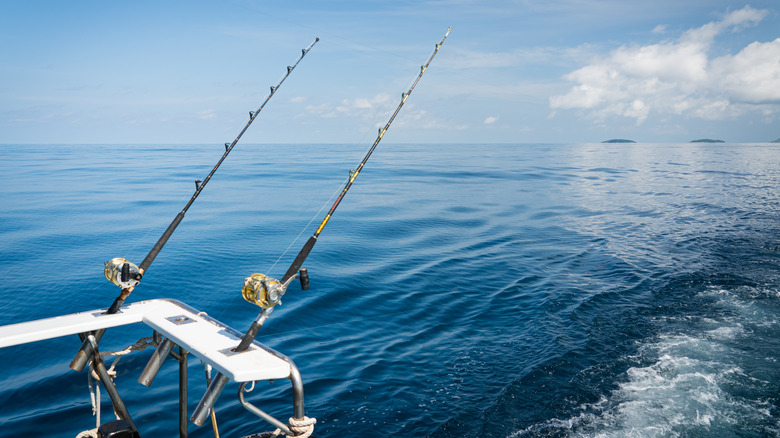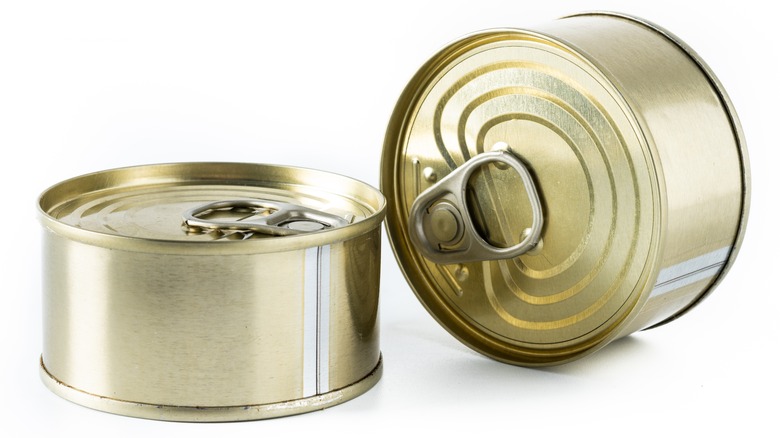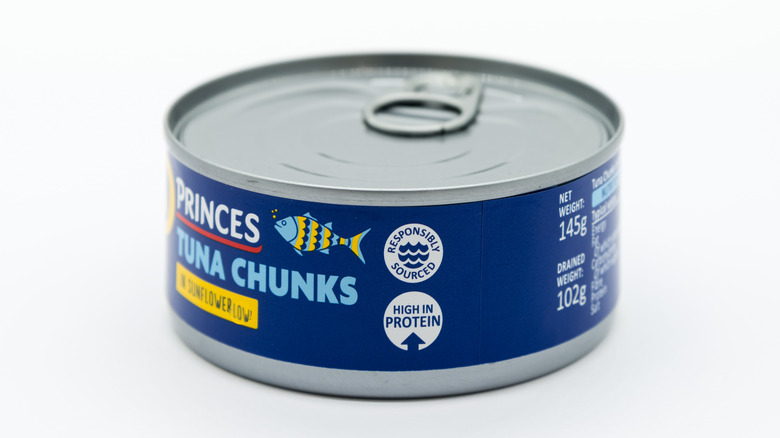What You Didn't Know About Canned Tuna Labels
Have you ever noticed all the details on tuna cans that most people breeze past? At first glance, it might seem like just a simple can of tuna, but those labels actually tell you a lot about what you're about to eat and its impact on the environment. They give information not only about the tuna's taste and nutritional levels, but also about how the fish was caught, whether the practices used were sustainable, and even if there might be any health concerns related to the packaging.
The thing is, though, all the different information on the label can be hard to decipher. For example, a tuna can label will often include whether the tuna is packed in oil or water, the species of tuna, and specific fishing methods used to catch the tuna. But if you can't interpret the symbols and logos that companies use or don't know why the information matters, you might not realize how it affects you. By understanding these labels, you can make smarter choices for your health, the health of the marine ecosystem, and your wallet, too. To help you navigate this information, we dug into exactly what all those items on a tuna can label mean as well as what you're getting into when a label is missing certain markers.
Tuna packed in oil alters its flavor and texture
Canned tuna comes packed in either oil or water. While this may seem like a trivial difference, it can affect how much you enjoy eating your tuna. With oil, tuna absorbs some of the flavor. A richer oil, like olive oil, will lend more of its flavor than a lighter variety, like canola oil, though both will notably contribute to the flavor profile of what's in the can. With that in mind, if you're not a huge fan of the flavor of oil, it might be wise to buy canned tuna packed in water, which creates an overall taste that will be milder.
In terms of texture, oil can help keep canned tuna moist and tender because of how fatty it is. On the other hand, tuna packed in water may be on the drier side. As a result, many people find oil-packed tuna more appetizing and suitable for dishes where a richer, fuller flavor is desired, such as in salads or pasta dishes. Tuna packed in water works well for dishes like tuna salad or a tuna casserole that add other sources of moisture, such as mayonnaise or a creamy sauce.
Tuna packed in water is more nutritious
There are two big reasons why water-packed tuna is better for your health than oil-packed tuna. The first is the calories. Tuna packed in oil has more calories (and more fat) than tuna packed in water because — surprise, surprise — oil adds calories while water does not. The amount of calories and fat added will depend on the type of oil, of course.
The second reason is related to the amount of omega-3 fatty acids in a can of tuna. Omega-3s come with all sorts of health benefits, such as lowering your risk for cardiovascular disease, Alzheimer's disease, and certain types of cancer, so generally you want them when you can get them. But fat is attracted to more fat, and both the oil and the tuna are fatty. So when tuna is packed in oil, some of the omega-3s in the tuna will leach into the oil. Then, when you drain the oil before eating the tuna, you end up pouring off a portion of these healthy and beneficial omega-3s. However, when tuna is packed in water, the omega-3s in the tuna remain intact because the fat and the water don't mix. As a result, water-packed tuna has a higher omega-3 content, making it a more nutritious choice (you could also keep the oil rather than drain it to retain the omega-3s, but just remember that whatever you are making with your tuna will have all that excess oil).
White tuna is different than light tuna
Most canned tuna labels will indicate either white or light tuna. These are blanket ways of stating the species without saying directly. The type of tuna you're eating matters because of mercury levels and flavor. Consuming too much mercury can pose health risks over time, potentially causing damage to the central nervous system and kidneys. It is especially problematic for pregnant women, nursing mothers, and young children, all of whom are more vulnerable to mercury's harmful effects.
A can labeled "white tuna" will most often be albacore tuna, a larger, more mild-tasting species. When a label says "light tuna," this signals a mix of species, such as skipjack and tongol, which are often smaller. However, chunk light tuna also might include yellowfin or bigeye tuna, both large species. If you check the ingredients list in the small print on the back of the can, it will tell you the exact types of tuna.
Generally speaking, the larger the fish is, the more mercury it will have. That means white or albacore tuna or any light tuna with significant yellowfin or bigeye tuna may be a brand to consider skipping because of its higher mercury content. Some labels are more transparent by specifying the exact tuna species in large print on the front of the can. Knowing the difference between white and light tuna can help you make smarter choices about what you're eating and keep your mercury intake in check.
Solid tuna is less flaky than chunk tuna
Basically every tuna can label will let you know whether the tuna is solid or chunk. Solid tuna has larger, firmer pieces of meat that are sliced off in a whole filet from larger fish. The tuna in these cans is not likely to be very flaky. It's sometimes even labeled as "fancy" tuna because of its higher quality and the premium cut. Conversely, the meat inside a can labeled chunk tuna will be smaller and flakier, though the size of the chunks can vary. Most of the time, chunk tuna is the less expensive option because smaller pieces are often byproducts of the larger premium sections of the fish. Less labor and precision needed in preparation leads to lower production costs, ultimately making chunk tuna cost less.
Many people prefer solid tuna for recipes where the appearance and texture of the tuna are important, such as in certain salads or gourmet dishes. This way, the firm, intact pieces can stand out. Chunk tuna is more versatile and ideal for dishes where the tuna is mixed with other ingredients, like tuna salad, casseroles, or pasta dishes, as the flakier texture easily blends. The choice between solid and chunk tuna comes down to personal preference in taste and mouthfeel. Some prefer the firm, meatier bite of solid tuna, while others enjoy the more tender consistency of chunk tuna.
MSC certification signals sustainable fishing practices
Overfishing and neglecting marine ecosystems have led to fewer fish in the ocean in recent decades, disrupting the balance of marine life and harming communities that depend on fishing for their livelihoods. This threatens both the environment and our ability to sustainably use ocean resources for food. Seeing a tuna can that includes a blue MSC label lets you know that the tuna was caught using methods certified by the Marine Stewardship Council (MSC) to allow the species to repopulate and keep its numbers healthy. The MSC is an international nonprofit involved in protecting the oceans and marine life.
The MSC certification process is rigorous, assessing fisheries based on their impact on fish populations, the marine ecosystem, and the management of the fishery. By choosing products with the MSC label, you are supporting sustainable fishing practices that aim to preserve fish stocks and protect marine habitats. Unfortunately, tuna cans that do not specify the fishing method might be using unsustainable or cruel ways of catching fish. Paying attention to the labels and opting for MSC-certified tuna allows you to make a positive impact on the environment and support the long-term health of our oceans.
You can't always trust a label marked dolphin-safe
The "dolphin-safe" label you may see on cans of tuna is not as reliable as it seems, according to the World Trade Organization. A tuna can marked "dolphin safe" implies that dolphins were protected during the fishing of tuna, but what it actually means is that the tuna was caught without setting large nets on dolphins to capture schools of fish underneath. However, just because this specific net technique wasn't used does not guarantee that no dolphins — nor other innocent sea bystanders, for that matter — were harmed.
The purpose of this misleading label is to make it easier (and less expensive) for large companies to meet the criteria for using the dolphin-safe label, knowing that consumers generally prefer to buy canned tuna that is caught sustainably. To this end, the controversy around "dolphin-safe" labels on tuna cans shows how tricky it can be for us to know whether our choices are truly helping the marine environment. It's a reminder that we need clearer labels based on ethics so we can make smarter decisions about what we buy.
A stamp that says pole-and-line caught is ideal for marine sustainability
The "pole-and-line caught" stamp on a tuna can label signifies a fishing method that is widely recognized for its sustainability benefits. Unlike methods involving large nets or traps, pole-and-line fishing means tuna are caught individually. By using this method, the people who do the fishing have greater control over what they catch, reducing accidental harm to non-targeted species, like turtles, dolphins, and sharks. It also helps to maintain the balance of marine ecosystems. This approach not only mitigates environmental impacts but also supports local economies and communities that depend on sustainable fishing practices. Specifically, pole-and-line fishing is often used by smaller-scale fisheries, keeping traditional fishing practices alive and boosting local economies along the coast. Plus, it helps make sure there's enough tuna for the long term without compromising the health of the ocean.
Certifications like "pole-and-line caught" are ideal for consumers seeking responsibly sourced seafood. They provide assurance that the tuna is caught in a way that keeps the ocean healthy and all its creatures thriving. As more people learn about sustainable fishing, they're more often choosing products with these labels, influencing industry practices toward more environmentally friendly methods.
If a label says FAD-free, its fishing methods are environmentally friendly
If a can of tuna bears the "FAD-free" label, it signifies that the fishing methods used do not rely on fish aggregating devices (FADs). These devices are floating objects deployed in the ocean to attract schools of fish, including tuna. However, FADs also unintentionally attract other unwanted marine species, leading to high levels of bycatch and negative effects to the marine ecosystems. By opting for FAD-free methods, fisheries aim to limit these environmental impacts and promote sustainable fishing practices.
The FAD-free label distinguishes itself from the specific "pole-and-line caught" label by encompassing a range of sustainable fishing techniques. These include not only pole-and-line fishing but also handline fishing and troll fishing. All of these fishing techniques selectively target tuna without using FADs. FAD-free fishing methods help ensure the long-term viability of tuna stocks by minimizing bycatch and preserving marine biodiversity. Choosing FAD-free tuna not only supports sustainable fisheries but also contributes to the conservation of marine ecosystems. It aligns with many consumers' preferences for environmentally friendly products and encourages responsible fishing practices across the seafood industry.
Even canned tuna doesn't last forever, so check the expiration date
Canned tuna lasts a good while, usually about three to five years. Still, it's wise to keep tabs on that expiration date. Why? Well, over time, the taste and quality can start to decline. Checking the date ensures you're enjoying your tuna when it tastes its best and is safest to eat. Expired canned tuna might not look, taste, or smell quite right. Plus, there's the risk of foodborne illness if harmful bacteria or toxins have developed. That's why it's smart to follow those dates on the label — they're there for a reason.
The way you store cans of tuna can also influence their shelf life. Storing canned tuna in a cool, dry place away from direct sunlight can help maintain its quality for longer. However, exposure to heat or fluctuations in temperature can accelerate spoilage. Basically, while canned tuna is pretty resilient, staying on top of the expiration date means you get to enjoy it at its freshest and safest.
A BPA-free marker on the label may help you avoid ingesting harmful chemicals
Bisphenol A, better known as BPA, is an industrial chemical often found in canned food liners. Research has shown that BPA leaches into the food inside the can, exposing consumers to the chemical when they eat the food. Human exposure to BPA in high doses can have some serious health effects, including reproductive and developmental issues, metabolic problems like obesity and diabetes, behavioral and neurological effects, and heightened risks during pregnancy and early childhood. However, exposure to low doses of BPA may be reasonably safe, at least according to some experts. Regardless, because of the potential risks of BPA exposure, many food producers stopped using BPA in their cans. Within the past decade, BPA levels in canned fish, including canned tuna, have dropped significantly.
BPA-free is one of the stamps you can look for on a canned tuna label that indicates that the product won't expose you to BPA. This is in and of itself a good thing to avoid ingesting these potentially harmful chemicals. However, the canning industry had to find a replacement for the BPA in can linings. Substitutes may pose different health risks of greater or lesser severity than BPA, but we can't know for sure, as they haven't been extensively studied yet. In any case, all of this information about BPA in canned food is good to keep in mind when you look for a BPA-free label on your tuna can.
Drained weight is the measurement that tells you how much tuna is actually in the can
If the drained weight is listed on a tuna can, that tells you the actual weight of the tuna meat after draining off the packing liquid, whether it's water or oil. However, not all cans list the drained weight. Instead, they just list the net or total weight, which incorporates both the tuna and the packing liquid. Since you generally drain the packing liquid before using the tuna, the net weight isn't a very helpful measurement regarding how much consumable food is in the can. The U.S. Food and Drug Administration is proposing that all canned tuna be required to include both the net weight and drained weight on the label so customers will always know how much tuna they're actually getting.
Knowing the drained weight is especially handy for anyone keeping track of their diet or meal planning because it lets you measure your protein intake more accurately. Plus, it helps you compare different brands more accurately. For example, two cans with the same net weight might have different amounts of actual tuna if one has more packing liquid than the other. This way, you can make sure that you're not just paying for extra water or oil and that you get the most value for your money.
